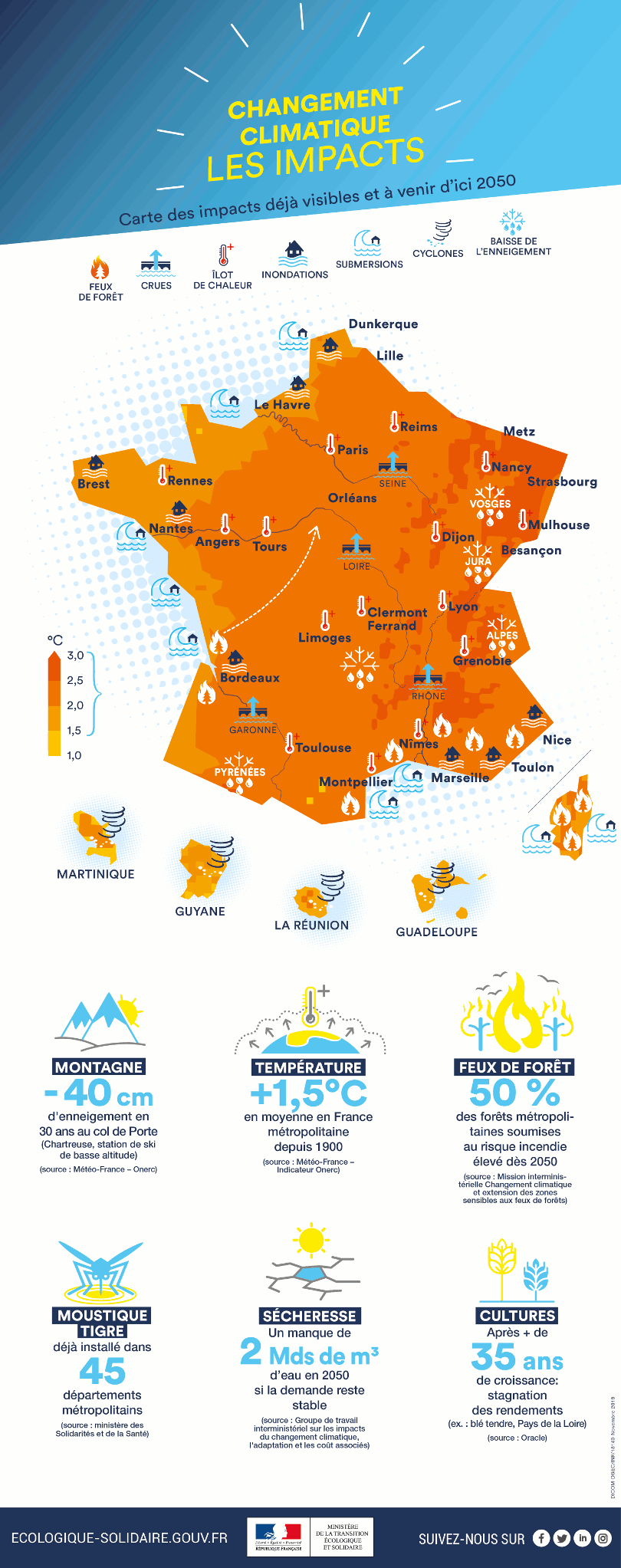Climate change is no longer a distant prospect. Its impacts are already visible, and their consequences very real for French companies. Tensions over resources, rising energy prices, new regulatory requirements... Faced with this reality, companies must now integrate climate risks into the heart of their strategy to ensure their long-term survival in a rapidly changing environment.
Understanding climate risk means assessing how meteorological phenomena, regulatory developments or market changes can directly or indirectly affect a company's business.
The aim is twofold: to strengthen the resilience of business models in the face of climatic hazards, while meeting the growing extra-financial reporting requirements imposed by European regulations (CSRD, CS3D, SFDR...).
The two main families of climate risks for businesses
Climate risks can be divided into two broad categories: physical risks and transition risks. These two dimensions reflect different but complementary realities of climate change and its effects on businesses.
On the one hand, physical risks include all damage directly linked to climate disruption that cannot be avoided:
- Natural disasters (floods, droughts, forest fires, marine submersions, etc.);
- Scarcity of certain resources (water, raw materials, etc.) ;
- Rising temperatures and heat waves;
- Etc.
The consequences are often a drop in productivity(-50% from 33 - 34°C), disruption of supply chains or difficulties accessing raw materials, compromising operational continuity.

Transition risks, on the other hand, are indirect risks associated with the transformation to a low-carbon economy:
- Regulatory developments (CSRD, BEGES, tertiary decree, carbon tax, etc.) ;
- Financial risks related to the investments required to become a more sustainable company (renovations, purchase of new equipment, R&D, etc.);
- Financial risks linked to certain market trends (volatility of energy prices, etc.) ;
- New investor expectations in terms of sustainability ;
- Changes in consumer behavior;
- Etc.
For companies, transition risks can lead to asset devaluation, the obsolescence of certain products or services, or the emergence of additional costs linked to carbon taxation.
🔎 Focus: beyond physical and transition risks, companies are increasingly exposed to reputational risks. Poor management of climate issues can damage their attractiveness to investors, talent and consumers.
Climate risks must be taken into account throughout the value chain
It's important to bear in mind that the effects of climate change are numerous and can impact your entire value chain: from the sourcing of raw materials to the distribution of finished products.
The table below gives concrete examples of climate change risks, and their impact on different links in the value chain.
ℹ️ 1 billion dollars: this is the cost of the losses announced by Toyota following the floods in South Africa in April 2022 (destruction of 4,300 vehicles and several months of work stoppages resulting in a loss of production of 45,000 cars).
How do you estimate the climatic risks weighing on a company?
Identifying climate risks requires a methodical approach covering the entire value chain, i.e. :
- Upstream and downstream mapping: list all your suppliers, partners, transport operators, distributors, partners... to obtain a map of your supply and distribution chains. The aim is to identify the physical and transitional risks to which all players are exposed, and which could ultimately have an impact on your business.
- Risk modeling: use numerical models (cat models, Climate Value-at-Risk, PACTA...) to assess how economic, political and environmental variables influence your exposure to the risks defined in step 1;
- Risk prioritization: rank risks by probability and impact to prioritize measures for adapting and decarbonizing your value chain.
Once the risks have been identified, it becomes much simpler to define an adaptation strategy to mitigate these impacts.
What's the link with CSDDD?
The CSDDD or CS3D (Corporate Sustainability Due Diligence Directive) is a European regulation which requires certain companies to implement a duty of care extended to their entire value chain.
These companies will therefore need to anticipate and prevent environmental, human rights and governance risks, in relation to their operations and those of their subsidiaries, subcontractors and suppliers.
Climate risks are fully part of the environmental risks to be assessed. The companies concerned will therefore have to estimate these risks precisely, and put in place mitigation and prevention measures.
How can we move from risk management to a genuine resilience strategy?
As you can see, anticipation is the key to a successful climate change adaptation strategy.
Companies now need to transform their approach to risk into a comprehensive resilience strategy. In other words, this means fully integrating climate risks into your governance and day-to-day business decisions.
To achieve this, the best way to proceed is to follow the regulatory framework provided by the CSRD directive, and more specifically by the ESRS E1 standard, dedicated to climate change. The latter sets out the fundamental concepts of sustainability reporting in this field. It provides a framework for companies to assess :
- Physical and transitional risks related to their activities and those of their value chain;
- The opportunities associated with the transition to a low-carbon economy (innovation, new markets, energy efficiency);
- The actions(transition plan) to be implemented to mitigate these risks and reduce their environmental impact.
The transition plan is the central tool in this methodology. It is based on a rigorous assessment of the risks and opportunities for your company. It's a living tool that helps you project different climate scenarios, with a clear view of the consequences for your business.
Conclusion
In the future, the companies that will come out on top will be those that have defined a trajectory that allows them to take climatic contingencies into account. They are the ones who will remain competitive in the face of markets in transition and ever more demanding regulations.
Photo credit: Nicolas Houdayer


.svg)



